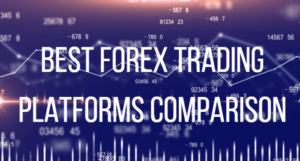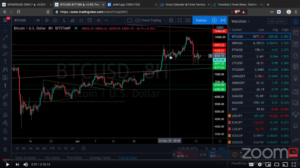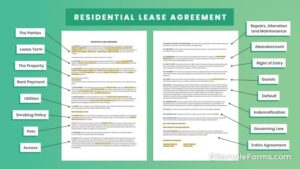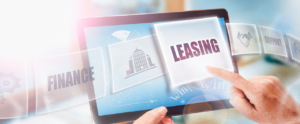
Welcome to the dazzling realm of Forex trading, where currencies dance and fortunes can flip faster than a pancake in a high-stakes brunch! Imagine a marketplace bustling with exotic currency pairs, each vying for your attention like suitors at a ball. In this whimsical world, the clock never stops ticking, and neither do the opportunities—ready to turn your financial dreams into a thrilling reality!
Forex trading isn’t just a game of chance; it’s a strategic battle ground where understanding market hours, leveraging your resources, and developing robust strategies can make all the difference. With a dash of wit and a pinch of wisdom, let’s delve into the essentials that will arm you with the knowledge needed to navigate this liquid market with finesse!
Forex Trading Basics
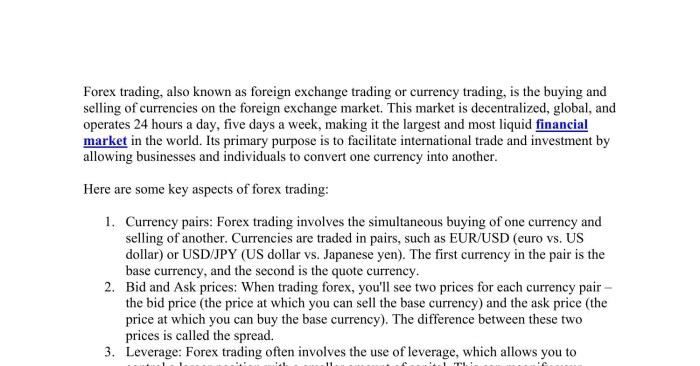
In the wild and wacky world of Forex trading, where currencies dance and tumble like drunken ballerinas at a party, understanding the basics is crucial for both novice traders and seasoned pros. This universe revolves around currency pairs, the market’s 24-hour party clock, and the exhilarating rollercoaster of leveraging that adds both sparkle and danger to your trading experience.
Currency Pairs and Market Hours
At the heart of Forex trading lies the concept of currency pairs, which are as essential to a trader as coffee is to a Monday morning. Each pair consists of two currencies: the base currency and the quote currency. For instance, in the pair EUR/USD, the Euro is the base currency, and the US Dollar is the quote currency. Traders are essentially betting on whether the base currency will strengthen or weaken against the quote currency.
Forex operates 24 hours a day, five days a week, making it the ultimate night owl’s playground. The market is divided into major sessions: the Asian, European, and North American sessions. Each session brings unique volatility and trading opportunities, like a buffet that keeps changing its menu. For example, the overlap between the London and New York sessions tends to see the most action, as traders from different regions collide like two heavyweights in a ring.
Differences Between Forex Trading and Stock Trading
Forex trading and stock trading may seem like distant cousins at a family reunion, but they have some striking differences. Stock trading is akin to owning a piece of a company, while Forex trading is a global currency exchange party where no one is actually buying a slice of the cake. In stock trading, the market hours are more limited, typically from 9:30 AM to 4 PM in the U.S., meaning the party ends early.
Forex, on the other hand, is like that party that keeps going and going, with no last call. Additionally, Forex trading generally involves lower transaction costs and higher liquidity, allowing traders to enter and exit positions without missing a beat.
Importance of Leveraging in Forex Trading
Leverage in Forex trading can be a double-edged sword; it can amplify profits, but it can also amplify losses. It’s like having a powerful sports car: it can get you to your destination in record time, but one wrong turn can lead to an accident. Traders often use leverage ratios, such as 50:1 or even 100:1, meaning they can control a much larger position than their initial investment.
For example, with a 100:1 leverage, a trader can control $100,000 with just $1,000. While this sounds like a golden ticket, it also means that a small unfavorable move in the market can lead to significant losses, potentially wiping out an account faster than you can say “margin call.” In summary, leveraging allows traders to maximize their potential returns, but it also requires careful risk management and a robust understanding of market dynamics.
As the saying goes, “With great power comes great responsibility,” and this is especially true in the exhilarating realm of Forex trading.
Financial Aspects of Forex Trading

Forex trading isn’t just about pips and charts; it’s also about managing your finances like a pro. Whether you’re a seasoned trader or just dipping your toes into the currency pool, understanding the financial side is crucial. Let’s dive into some important aspects of managing your money while trading Forex, so you don’t end up with more red flags than a bullfighting contest!
Methods for Managing Finances Effectively
Effective financial management is the bedrock of successful Forex trading. Here are some methods that can help ensure your trading account doesn’t resemble a used car lot—full of clunkers and regret:
- Set a Trading Capital Limit: Determine how much money you can afford to risk. This amount should be something that won’t leave you crying into your pillow at night.
- Use Stop-Loss Orders: These handy little tools prevent you from losing more than you should. Think of them as your safety net—one that’s best to have when jumping off the trading trapeze.
- Leverage Wisely: While leverage can multiply your profits, it can also multiply your losses. Use it sparingly, like that last slice of pizza—everyone wants it, but not everyone should have it!
- Record All Transactions: Keep a detailed journal of your trades to track your gains, losses, and—you guessed it—your trading habits. It’s like being your own financial therapist!
Setting Up a Budget for Forex Trading Activities
Creating a budget tailored for Forex trading can feel like fitting a square peg in a round hole. However, it’s essential for keeping your financial house in order. Here are some steps to consider when crafting that budget:
- Assess Your Monthly Income: Know what you bring in each month. It’s the foundation upon which all your budgeting dreams will be built, much like the sturdy brick base of a cartoon house.
- Determine Fixed and Variable Expenses: Identify what you must pay each month (rent, food) versus what you want to pay (new trading software, luxurious coffee). Knowing this will help you see where trading fits in.
- Allocate Funds for Trading: Decide how much of your disposable income you’ll dedicate to trading. Make this amount reasonable—your trading ambitions should not lead to living in a van down by the river!
- Review Regularly: Life changes and so should your budget. Revisit it often to ensure it aligns with your trading performance and market conditions.
Impact of Credit Scores on Financing Options
Your credit score can be more crucial than you think when it comes to financing your Forex trading activities. It’s essentially your financial report card, and it comes with implications that can affect how much you can borrow for trading:
- Loan Options: A high credit score may open doors to favorable financing options, enabling you to access capital for trading. Conversely, a low score can slam those doors shut faster than a toddler having a tantrum.
- Interest Rates: The better your credit score, the lower the interest rates you’ll likely face on borrowed funds. It’s like the financial version of ‘the bigger the smile, the more likely you are to get a free dessert’!
- Margin Requirements: Brokers often look at your credit score to determine the margin they’ll offer you. A stellar score might land you some impressive leverage, while a mediocre score can leave you juggling pennies.
- Financial Relationships: Maintaining a good credit score can build trust with lenders. It’s like being the popular kid in school; every broker wants to be your friend when you have a solid reputation!
Strategies and Tools for Successful Forex Trading
In the wild, wild world of Forex trading, having a trusty strategy and the right tools is akin to having a map in a treasure hunt. Without them, you might end up wandering in circles, scratching your head, and wondering why you decided to trade your piggy bank for a financial rollercoaster ride. Let’s dive into the nitty-gritty of trading strategies and the essential tools that can catapult your Forex game to stratospheric heights!
Comparison of Trading Strategies
In Forex trading, choosing the right strategy is like picking your favorite pizza topping—everyone has their preference, and there’s no one-size-fits-all. Here are two popular strategies that traders often adopt:
- Day Trading: This high-energy strategy involves making multiple trades within a single day. Traders capitalize on short-term price movements, often getting in and out of positions in a flash. Perfect for those who thrive on adrenaline and coffee!
- Swing Trading: This approach is like a leisurely stroll through the park—traders hold positions for several days to capture price swings. It’s less frantic than day trading and allows for more in-depth analysis, making it ideal for those who prefer to stop and smell the roses (or charts).
Both strategies have their pros and cons. Day trading can lead to quick profits but requires constant vigilance, while swing trading offers a more relaxed pace but may miss out on immediate gains. Choose wisely, young grasshopper!
Essential Tools and Platforms for Forex Trading
To navigate the Forex jungle, one must have the right gear. Here’s a list of essential tools and platforms that will help you slice through the clutter like a hot knife through butter:
- Charting Software: Tools like MetaTrader 4 (MT4) and TradingView allow traders to visualize price movements through dynamic charts. You wouldn’t want to navigate a ship without radar, would you?
- Analysis Tools: Fundamental and technical analysis tools, such as economic calendars and technical indicators, help traders make informed decisions. Think of them as the trusty compass guiding you through market fluctuations.
- Broker Platforms: Reliable brokers like IG, OANDA, and Forex.com offer integrated platforms where trades can be executed seamlessly. You wouldn’t want your treasure chest to be guarded by a pirate, right?
Investing in the right tools is akin to adding rocket fuel to your trading journey—an absolute necessity for making wise decisions.
Role of Economic Indicators in Forex Trading
Economic indicators are the pulse of the Forex market, providing crucial information that can guide traders in their decision-making process. Here’s how traders can benefit from these vital statistics:
- Interest Rates: Changes in interest rates can dramatically affect currency values. When a country raises its rates, its currency usually strengthens, like a bodybuilder flexing their muscles.
- Employment Data: Employment rates and job creation statistics reflect economic health. A booming job market often leads to a stronger currency, while high unemployment can have the opposite effect.
- Inflation Rates: Inflation indicators inform traders about purchasing power. High inflation may erode currency value, akin to letting air out of a balloon.
By keeping an eye on these economic indicators, traders can predict potential market movements, making this knowledge their secret weapon against unpredictable market tides.
Epilogue
And there you have it, the enchanting saga of Forex trading! From the fundamental concepts to the art of strategy, you’re now equipped with the tools to join the ranks of savvy traders making waves in the financial seas. So, grab your virtual surfboard, catch those currency waves, and remember: in the wacky world of Forex, every tick could be your golden ticket to success!
Common Queries
What is Forex trading?
Forex trading is the exchange of currencies in a global marketplace, allowing traders to speculate on price movements.
How do I start Forex trading?
To start Forex trading, you need to choose a reliable broker, set up a trading account, and familiarize yourself with the trading platform.
What are currency pairs?
Currency pairs are two currencies traded against each other, such as EUR/USD, where the first currency is the base currency and the second is the quote currency.
Is Forex trading risky?
Yes, Forex trading carries a high level of risk due to market volatility and leverage; it’s essential to manage risks carefully.
Can I trade Forex part-time?
Absolutely! Many traders engage in Forex trading part-time, but effective time management and strategy are crucial for success.
